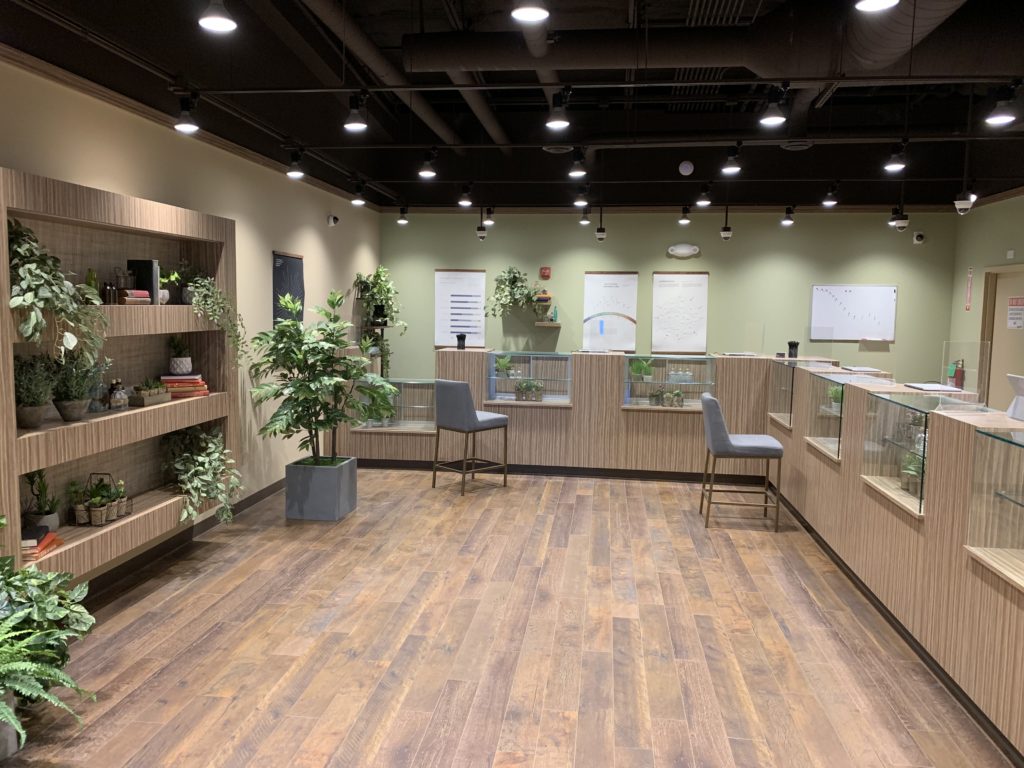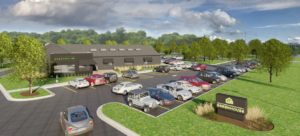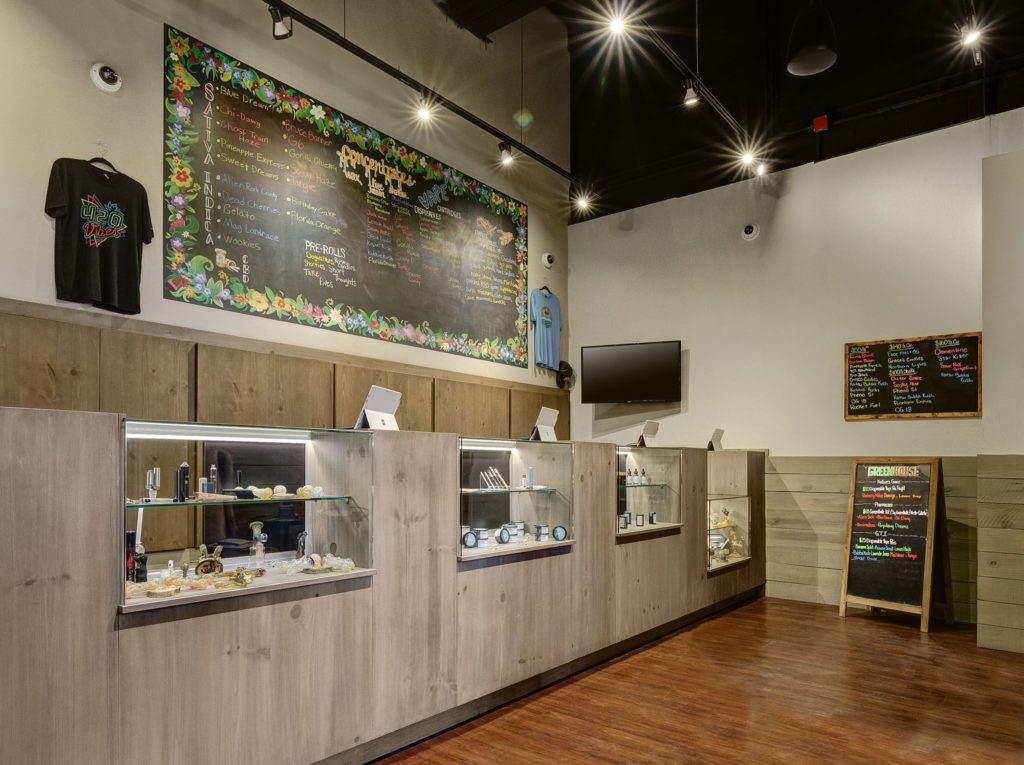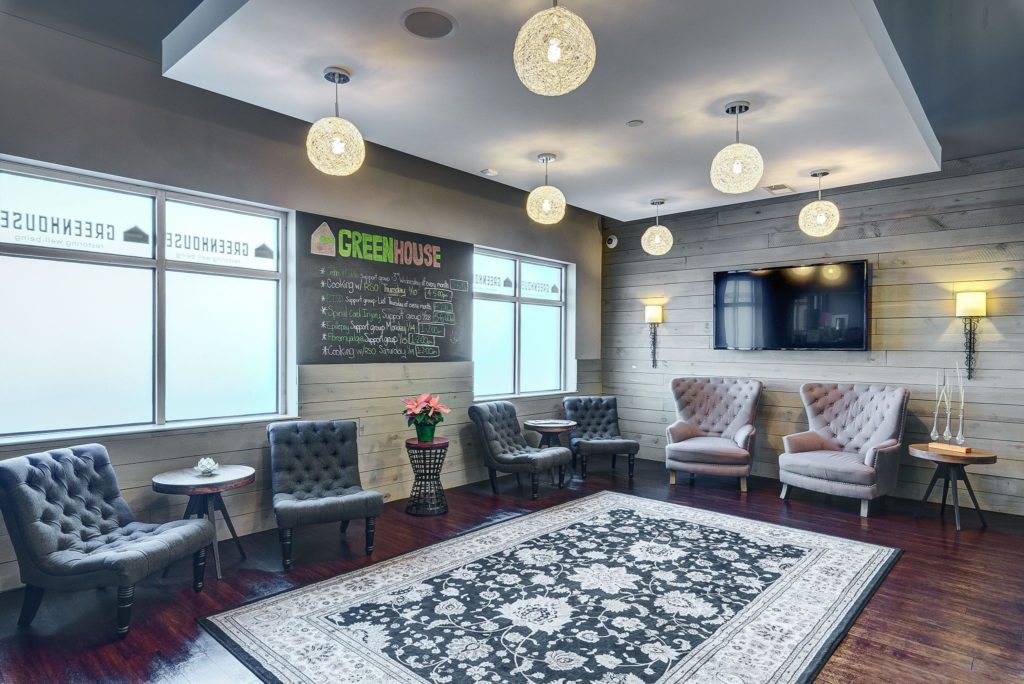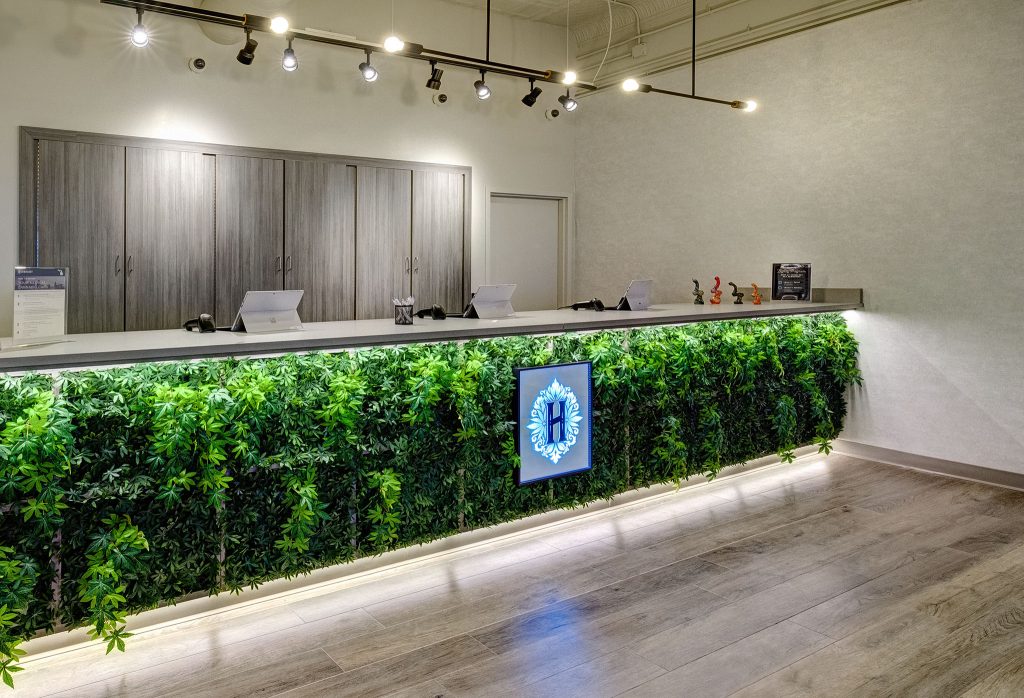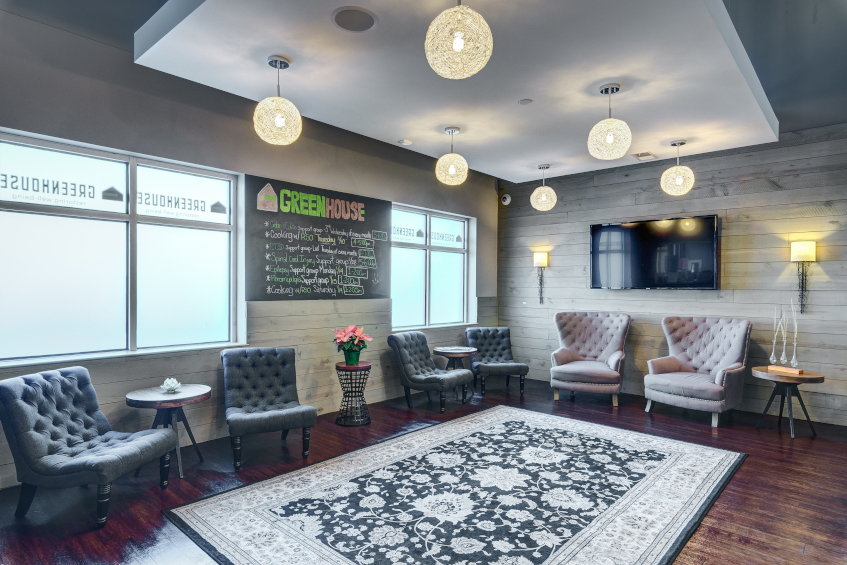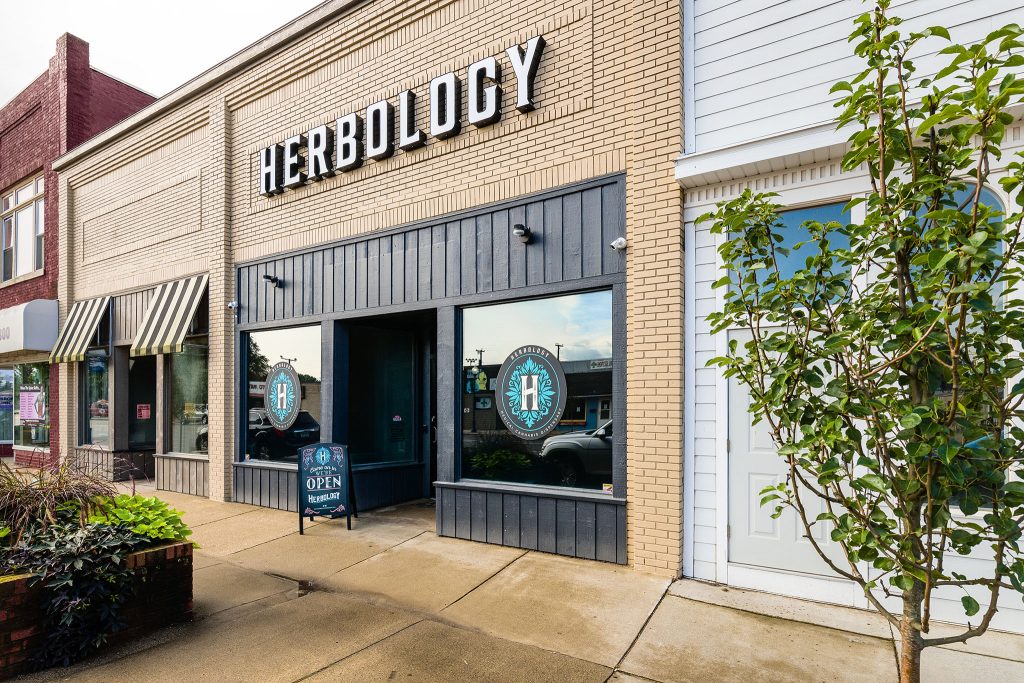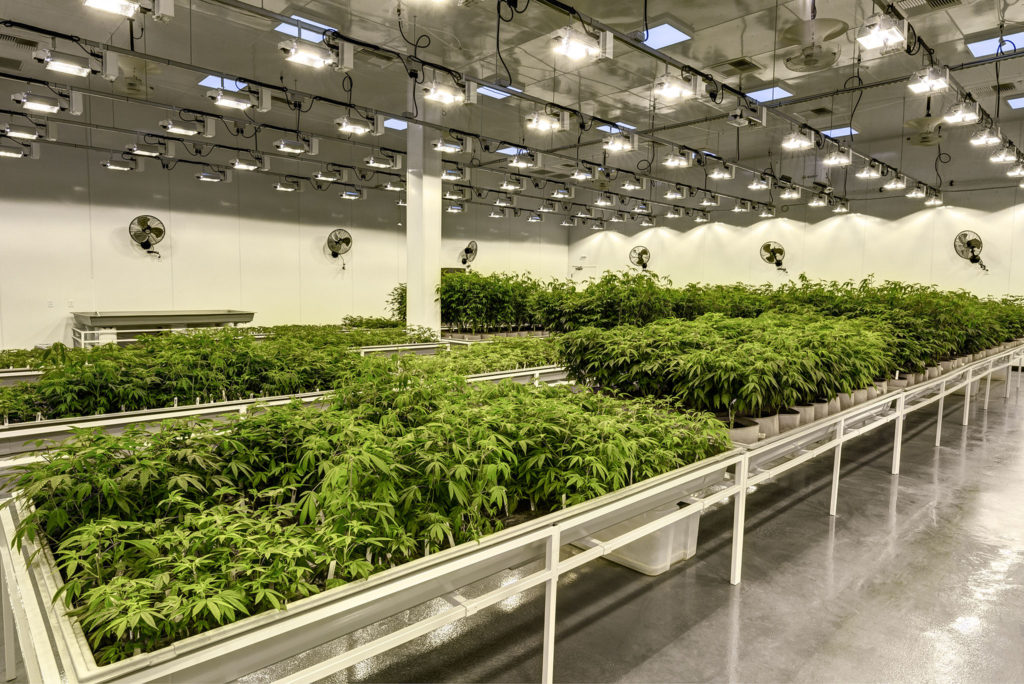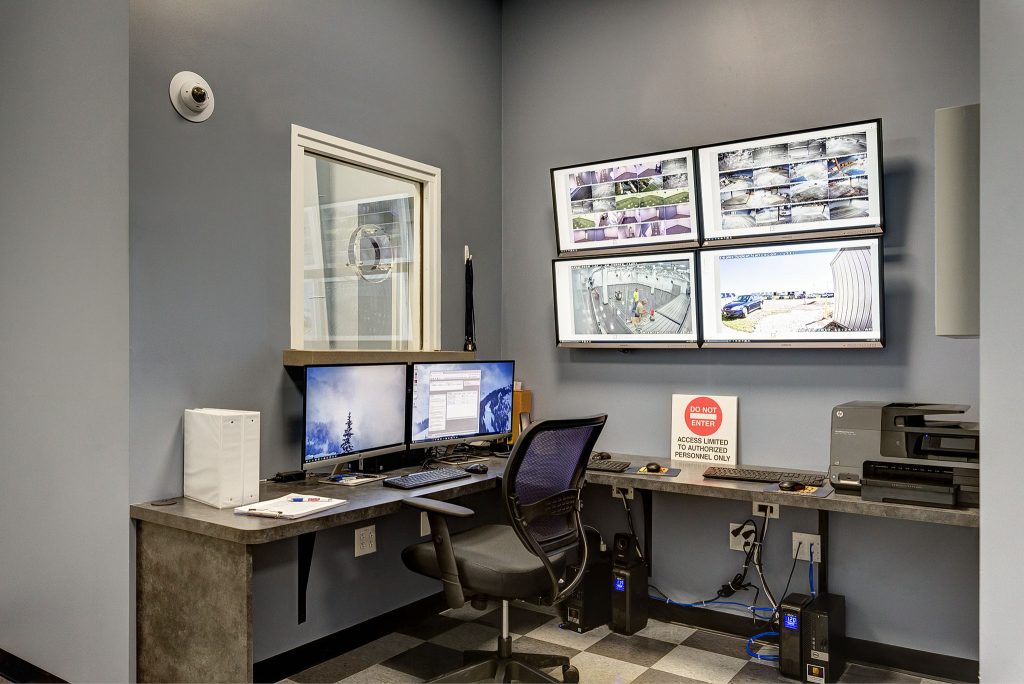Category: canna-business
Andy Poticha speaks to Chicago NORML as part of the Social Equity Applicant Technical Assistance series
We are honored to be a part of Chicago NORML‘s Social Equity Applicant Technical Assistance (SEAT) series, serving as the design-build construction expert for aspiring cannabis entrepreneurs. Through SEAT and a wide variety of other efforts, Chicago NORML is empowering communities with a passionate and methodical approach to changing perceptions surrounding the legalization of marijuana. We are proud to support their work and the efforts of minority applicants entering the cannabis industry. Below, our Principal Andy Poticha speaks about the “must-knows” of designing and building cannabis facilities to deliver a unique customer experience while adhering to state and local regulations.
Building Your New Dispensary: Avoiding Common Design-Build Mistakes as a New Licensee
So you’re planning a new cannabis dispensary – congratulations! Whether this dispensary is your entrepreneurial dream come true or you’ve been down this road before, once you confirm your license, you’ll want to begin building out your location as quickly as possible. Our teams, currently building dispensaries across Illinois and other States, can help steer you through the unique maze that is the cannabis construction process.
Building a new dispensary is not as simple as it sounds. Dispensaries must offer the security of a bank branch, the compliance of a pharmaceutical company, and the aesthetic of a high-end retailer.
As experts in the design-build construction of cannabis facilities, our teams have been in the trenches building dispensaries, cultivation centers and processing labs since 2015, including a national flagship dispensary in Northbrook, currently under construction. We have been involved in more than 30 dispensary, cultivation center and processing lab projects in nine states since 2015. Currently, we are leading renovation projects that offer more than 35,000 new square feet of cannabis cultivation and dispensaries customized for the needs of both medical and recreational cannabis customers.
Here are a few ways you can jump ahead of the curve:
Differentiate the customer experience. Buying cannabis in a regulated dispensary should feel easy, welcoming and natural. Designing for the customer experience, creating welcoming sales environments, while remaining compliant with regulations, is where dispensaries differentiate themselves from the competition. One reason this is so important: with strict supply chain rules in place, many cannabis products are highly commoditized. If your product is a commodity, the customer experience becomes even more important.
Prioritize compliance or suffer the consequences. To maintain product supply and operational retail sales, stick to strict protocols and carefully follow building codes related to the handling, storage and distribution of cannabis throughout the supply chain. In Illinois, building code inspections are unique to each municipality, with enormous differences from one community to another. Be sure your design-build construction partner knows the right questions to ask, and the pitfalls that could come up at each inspection milestone.
Use a design-build approach. Design-build integrates your design and construction teams from the beginning, reducing surprises and streamlining your budget throughout the process of envisioning and construction your dispensary. When your architect and contractor are working together, you’ll find you have more time to focus on running your cannabis business, with less time spent in meetings about your space. In addition, a design-build model allows for a single point of accountability. At CFC, we use our four-step design-build process to ensure alignment and high-touch customer service throughout your project.
Your contractor shouldn’t be learning on the job. Your design-build construction partner should be respected in the industry and be able to speak to ‘tales from the trenches.’ While legalized recreational cannabis may be new to Illinois, there are companies like us that have been building for both medical and recreational cannabis for many years. You should never have to hear ‘let’s learn this together.’
Don’t let the pandemic get you down. As an essential business, construction has been building cannabis facilities throughout the COVID-19 shut-down period and continues today. With the right protocols in place, there’s no reason the construction of your dispensary can’t press forward. To understand more about how our crews stay safe, you can read our National Cannabis Industry Association (NCIA) blog post from June 2020 on how to expand or renovate your cannabis facility while observing social distancing.
Choose a contractor with experience. For nearly five years, CFC has worked with numerous cannabis companies, including vertically integrated multi-state operators (MSOs). “Partnering with CFC, we have been thoughtful about connecting the design/build process with our customer experience and compliance objectives,” said Mitch Kahn of Greenhouse Cannabis. “Together, we identified and solved potential issues early in the design/build process, so that the build-out is supportive of sales, security, and being good neighbors in our communities.”
Need more resources on the design-build dispensary construction process? Here are a few suggestions:
NCIA PODCAST:
https://thecannabisindustry.org/podcasts/cannabis-facility-design-and-construction/
KNOW BEFORE YOU GROW:
https://rejournals.com/know-before-you-grow-secrets-of-successful-cannabis-facilities/
KEY SUCCESS FACTORS:
While cannabis continues to be a fast-paced industry with changes on a daily and weekly basis, it’s no longer brand-new. There’s no reason you shouldn’t have a guide who knows the right questions to ask and can keep you from repeating mistakes of the past.
For more information on working with our Cannabis Facility Construction experienced teams, you can request a consultation here and one of our team members will get back to you immediately.
Construction On Cannabis Dispensary Begins
Northbrook Patch | Jun 17, 2020 – Construction is underway on a new recreational and medical dispensary at 755 Skokie Blvd. in Northbrook. Cannabis Facility Construction, a national, full-service, cannabis design-build construction firm based in Northbrook, announced the news Tuesday. The facility will be run by Greenhouse Group LLC.
The Northbrook location will be a national flagship location for the brand, according to a press release. The site, offering nearly 10,000-square-feet of finished space, is the former home the Rehabilitation Institute of Chicago. The vacant Marathon Gas station at 430 Dundee Road will be consolidated into one lot.
“As their preferred design-build partner, CFC has delivered multiple dispensaries for Greenhouse over the past five years in various states across the country,” said Andy Poticha, principal at Cannabis Facility Construction, in the release. “We are now especially excited to have this opportunity to build their largest flagship location right here in our own backyard.”
Read more at Northbrook Patch
In 2020, Cannabis Construction Must Offer Security of a Bank, Compliance of a Pharmaceutical Company, Aesthetic of a High-end Retailer
Legal recreational cannabis is a new industry in Illinois—and it’s in dire need of customized facilities. The first month of recreational cannabis sales in Illinois amounted to nearly $40 million. Sales figures spell opportunity both for cannabis companies and for experts in building special-purpose facilities for the industry’s stringent regulations and experience-driven customers.
Andy Poticha, Principal at Cannabis Facility Construction (CFC) has been involved in more than 30 cultivation, processing center and dispensary projects in eight states since 2015. He’s leading renovation projects that offer Illinois more than 35,000 new square feet of cannabis cultivation areas and dispensaries customized for the needs of recreational cannabis customers.
“To become recreational cannabis users’ preferred dispensary, new cannabis license holders must prioritize both compliance and customers in their facility design,” Poticha observes. The design/build process must support two core objectives:
- Prioritize compliance or suffer the consequences. To maintain product supply and operational retail sales, stick to strict protocols and carefully follow building codes related to the handling, storage and distribution of cannabis throughout the supply chain.
- Offer a differentiated customer experience. Product commoditization and restricted in-state cannabis sourcing leads to stiff competition between dispensaries.
“Cannabis companies need to offer the security of a bank branch, the compliance of a pharmaceutical company, and the aesthetic of a high-end retailer,” said Poticha. “Designing for the customer experience, creating welcoming sales environments that are compliant with regulations, is where dispensaries can find true opportunity to differentiate themselves from the competition.”
For nearly five years, CFC has worked with numerous cannabis companies, including Grassroots Cannabis, a vertically integrated multi-state cannabis company. For co-founder Mitch Kahn, CFC has helped Grassroots embrace these seemingly competing objectives into a cohesive customer experience.
“Partnering with CFC, we have been thoughtful about connecting the design/build process with our customer experience and compliance objectives,” said Kahn. “Together, we identified and solved potential issues early in the design/build process, so that the build-out is supportive of sales, security, and being good neighbors in our communities.”
Know before you grow: Secrets of successful cannabis facilities
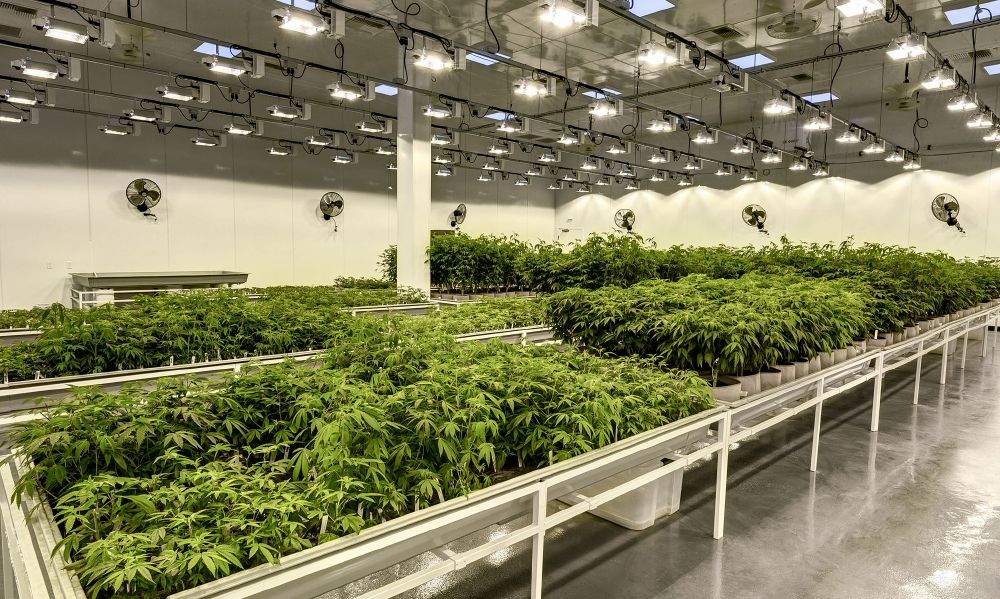
This article was original posted on the REJournals blog here.
As cannabis legalization sweeps the Midwest, demand for facilities to grow, process and sell cannabis products is skyrocketing. A shared concern in every state is product shortages; will there be enough cultivation facilities to provide product to the market? Therein lies the makings of a rush to market—and a building boom.
The business opportunity is evident. What many don’t recognize is the high risk of construction delays due to the complex requirements for cannabis facilities. While every location is regulated differently at the local and state levels, we’ve identified a set of success factors for cannabis facility site selection and construction across the eight states where we’ve led renovations.
Don’t rush pre-construction planning
In a new industry, speed-to-market is critical—but it’s a marathon, not a sprint. Carefully choosing the right site for operational success and ensuring that the drawings are compliant will be time well spent. Confirm that regulations are addressed, from cannabis-specific rules to unique building codes and even future investment structure parameters. Investing up front will reduce delays and costs later in the process.
Security comes first—no exceptions
Security is the first concern in any zoning approval meeting, regulatory inspection or other critical path approval milestone. Understanding local community and police expectations for a secure facility, beyond what is required by law, is critical to ensuring the facility design and construction will be approved for operational use. Security in the cannabis industry is more than cameras and technology installation; the building you choose must offer secure and compliant entry areas for employees and (for retail) customers, and the renovation must foresee and address any potential security risks of the facility itself.
Entry and egress are critical
For both dispensaries and cultivation facilities, the process of bringing cannabis products in and out of the building is both operationally critical and externally controversial. If you don’t have the right loading area design, you may have to make costly changes later in the process—or even abandon an otherwise strategic site, because the site simply can’t alleviate community concerns about safety or traffic.
Technology installation is part of your schedule, whether you plan for it or not
Many cultivation facilities are largely located in existing buildings that began their life as a warehouse or factory. However, the shell is just the beginning. Beyond ensuring the construction is code compliant and aligns with the operational program, the construction timeline needs to account for the installation of multiple complex interlocking technology systems required to grow high-quality, legal cannabis. Major systems include advanced HVAC systems that regulate and measure air purity, sophisticated lighting systems, cannabis processing equipment that requires custom environments, industrial-scale kitchen areas and advanced racking, water supply and automation systems.
Don’t underestimate the HVAC, lighting and other technical requirements for cultivation facilities
More similar to pharmaceutical manufacturing operations than a family farm, cannabis cultivation requires highly specialized facility features. The products that will be grown in the facility will undergo rigorous testing and compliance monitoring, requiring sophisticated lighting, air purification and water management systems. Working with a knowledgeable team who can ask the right questions based on operational experience is critical to ensuring an environment conducive to growing high-quality cannabis.
Build in flexibility for rapidly evolving needs and regulations—especially the transition from medical to recreational sales
Today’s regulations are tomorrow’s memories. In a rapidly evolving industry, your facility needs to be compliant today, and give you flexibility to adjust as regulations change. The most significant change may come when your state evolves from medicinal cannabis legalization to recreational use. Typically, when a facility has been designed according to medical regulations, it will need significant renovation to be compliant for adult use cannabis growth, processing or sales. By making future-forward decisions during the design-build and site selection processes, you’ll ensure your facility is ready for that transition, saving time and money down the road.
Environmental impact can bring construction to a halt if you’re not careful
Even well into the construction or renovation process, your facility’s impact on the natural environment is an important aspect of the project. Mistakes can potentially give ammunition to anti-cannabis foes or bring expensive and unexpected issues to address. To avoid costly environment-related delays, it is beneficial to establish relationships with local authorities early on in the development process. Be proactive and address any concerns in advance: i.e. plan to improve water and air quality; reduce energy use; manage waste discharge; protect nearby wetlands, rivers, fisheries and forests and have a plan in place in case you discover ancient human artifacts (classified as “cultural resources”).
There’s an upswell of interest from real estate companies to expand services into the cannabis sector, and rightly so, given the rising demand for cannabis retail, cultivation and processing facilities. The successful projects will be the ones that plan for the complexity of this highly regulated industry.
About the author
Andy Poticha is the principal of Northbrook, Illinois-based Cannabis Facility Construction and Mosaic Construction. He has led the renovation of more than 30 cultivation facilities, processing centers and dispensary projects totaling more than 307,800 square feet in eight states including Illinois.
Stipulated Sum Agreements Make Us the Right Builder for You
Our goal as a design-build firm is to create value for our clients through outstanding service-delivery and building trusted relationships. One of the many ways we achieve our goal is how we structure our contracts. Our clients want to know what they’re paying for, and we are able to clearly spell that out by providing stipulated sum agreements.
What is a Stipulated Sum?
Also referred to as a lump sum contract, a stipulated sum requires a builder to agree to provide specified services for a fixed price based on labor and material costs. The builder is responsible for executing the job properly and will provide its own means and methods to complete the project. Specifically, we use stipulated sum agreements with our multifamily and commercial projects, and they allow us to better define the scope and schedule of projects.
“We have always been client-centric, and what that means is that we want our clients to look at us as their design-build partners. The way we have been set up from inception has lent itself to that type of relationship.”
– Andy Poticha
Why We Use Stipulated Sums
Cannabis Facility Construction uses stipulated sums so that our clients know what they’re getting, and we know exactly what we need to deliver. Our contracts are predictable and easy to manage and benefit our clients in the following ways:
No Hidden Fees
One of Cannabis Facility Construction’s key differentiators is that we never stick our clients with hidden fees, compared to cost-plus-fixed-fee and other contracts. “We don’t charge, as most architects and most contractors do, a percentage of construction,” said Andy Poticha, Principal of Cannabis Facility Construction, on the Cannabis Legalization News podcast. “You have no incentive to finish a job on time and you have every incentive to make it cost more money. We said if we’re truly going to be partners with our clients, we need to have some skin in the game. We’re going to be offering them our process and our intellectual property, and we’re going to say that the project’s going to take this long, and our fee is going to be a stipulated sum based on how long that’s going to take.”
Predictability
Our clients value the predictability of stipulated sum agreements, especially since they reduce risk and give them more confidence. With an agreed upon sum in place, our clients are not liable for any cost overruns. “It doesn’t matter to us if the project is $6,000, $600,000, $60 Million, or $600 million,” added Poticha. “If it takes six months to do, our fees are going to be the same. Our clients understand that we have an incentive to finish it in the time that we’ve agreed to. But just as importantly, we have the incentive to make sure that our client is getting the most bang for their buck without us having the incentive of trying to sell them something more.”
Better Collaboration
We find that stipulated sum arrangements foster a greater degree of collaboration between Cannabis Facility Construction and our clients. We are able to execute tight project management and more efficient communication to ensure that both parties are adhering to the scope of work. “We are very different in our approach to how we look at our clients,” said Poticha. “We have always been client-centric, and what that means is that we want our clients to look at us as their design-build partners. The way we have been set up from inception has lent itself to that type of relationship.”
The design-build methodology supports our goal because it allows us to streamline the construction process, which ultimately benefits our clients and our management team. “We look at every project not as a one-time project, how much money can we make, finish it, and go on to the next project,” added Poticha. “We’re offering our client this partnership so that they can go on and do what they do best, while we do what we do best.”
The Essential Staff of a Cultivation Facility
At the conclusion of many a cannabis customer’s journey is consumption of the product. Whether that method is smoking, vaping, ingesting, or topically applying the product, how it arrived on or in your person traces back to the cultivation facility where it was farmed, grown, and groomed. Dispensary shelves and display cases are bedecked with flowers, oils, extracts, shatter, edibles, and more, but none of that exists without cultivation. Canna-business is the fastest growing sector in the country due in large part to the essential staff of cultivation facilities.
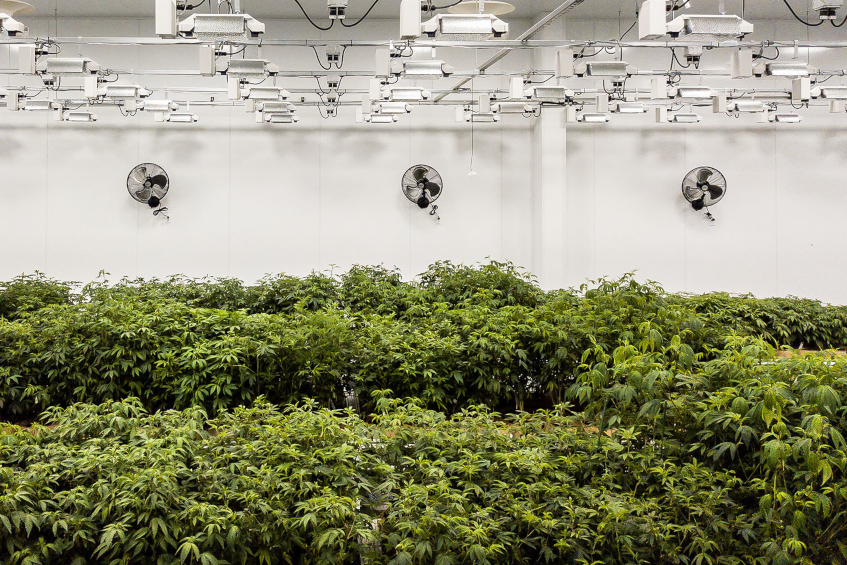
Master Grower and Junior Grower
A successful cultivation operation starts at the top with the master grower, whose credentials include backgrounds in horticulture or agriculture and often advanced degrees. Also known as director of cultivation, this person is not only responsible for overseeing the cultivation of all cannabis plants, but managing the entire operation of the facility. They are in charge of all grow house employees and must routinely ensure that the facility is in step with regulations. It may not stop there.
As CNBC reported, “At larger operations, cultivation directors have management responsibility for a team of growers, and the position typically requires frequent interaction with law enforcement to ensure compliance.”
A junior grower or a master grower-in-training, works directly under the tutelage of the master grower. This person is primarily responsible for successfully growing the plants. Duties include planting, cloning, feeding, and proper watering.
Trimmers and Technicians
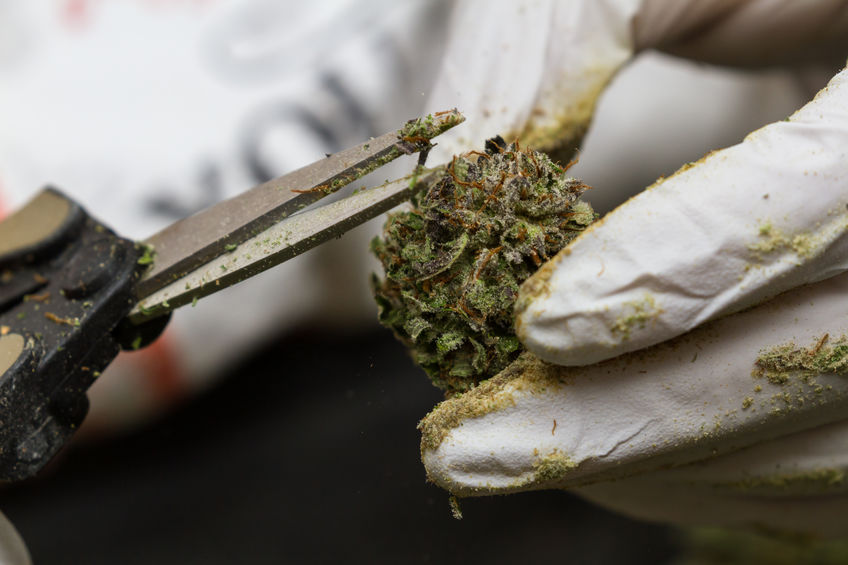
They call it a plant-touching niche for a reason. Trimmers have direct contact with cannabis plants, and their job is to prune and manicure the plants during harvest season without harming them. Trimmers are tasked with understanding the plant anatomy and the difference between strains. The job requires physical endurance and concentration. “Bud trimmer is an excellent entry-level job,” writes James Yagielo of Hemp Staff. “It’s a great way to break into a marijuana cultivation career with plenty of room for upward mobility.”
Similar to trimmers, cultivation technicians handle pruning duties, but they are more focused on the fulfillment of growing cannabis, including germination, cloning, and transplantation. Quality Control Inspector QC Inspectors ensure that cannabis products comply with health, safety, and potency standards. Many in the field are PhD’s in biology, agronomy, chemistry, or entomology and often
help inspect and enforce marijuana cultivation laws and regulations, as well as those that apply to the use of pesticides.
Director of Extraction
The function of processing or converting the raw materials of cannabis into usable forms, may take place under the same roof as cultivation, especially with companies that practice vertical integration. Extraction falls under the processing umbrella and is the method for turning cannabis buds into oils and concentrates for vaping. The Director of Extraction typically has a solid background in pharmacology or chemistry and designs and runs processing, including laboratory functions and the management of extraction staff.
Conclusion
Cannabis employment increased nearly 700 percent between 2017 and 2018 and is projected to grow another 220 percent in 2019. Legal cannabis was a $9 billion industry in the United States last year and will balloon to $21 billion per year by 2021. Cultivation is where everything begins thanks to staff with the unique skill set to make it happen.
